Archives of Clinical Gastroenterology
More than a common acid buffering in the treatment of Non-Erosive GERD-like Clinical Spectrum: A Chios Masthia-based Formulation with (Cyto) Protecting Effect
Barreto R1, Todai M2, Kumar N3, Hayakawa K2, Marotta F4*, Imaoka Y2 and Catanzaro R5
2BioClinic Center & Corporation, Sendai, Japan
3Faculty of Applied Sciences, Shri Venkateshwara University, JP Nagar, Uttar Pradesh, India
4ReGenera Research Group for Aging-Intervention, Milano & San Babila Clinic, Vitality Therapeutics, CMB Unit, Milano, Italy
5Department of Clinical and Experimental Medicine, Section of Gastroenterology, University of Catania, Catania, Italy
Cite this as
Barreto R, Todai M, Kumar N, Hayakawa K, Marotta F, et al (2019) More than a common acid buffering in the treatment of Non-Erosive GERD-like Clinical Spectrum: A Chios Masthia-based Formulation with (Cyto) Protecting Effect. Arch Clin Gastroenterol 5(1): 003-010. DOI: 10.17352/2455-2283.000060The aim of this study was to test the clinical and mucosal benefit of a natural gastro-oesophageal mucosal protector DOGDG-121 in non-erosive GERD comprising from NERD, to Functional Heartburn and Hypersensitive oesophagus while also ascertain the symptom-free duration in patients with prior symptomatic relapsing GERD. 68 consecutive adult patients, reporting mild heartburn symptoms two or more days a week or at least moderate symptoms more than once a week for at least six months duration were prospectively recruited. Inclusion criteria were: recurrent typical GERD symptoms, such as heartburn and/or acid regurgitation and a duration of symptoms>6 months. Patients were divided in two groups comparable as for age, gender, BMI and pHmetry profile. One group was given 1 sachet a day (2gr) of DOGDG-121 (chios masthia- and musa extract-based phytocompound, Reflumed, Named, Italy) quickly stirred in a small water quantity (≤30ml) and swallowed at once, while the other was administered 5ml of a buffering antacid suspension (BAS) (Dried Aluminium Hydroxide Gel 230mg,Magnesium Hydroxide 200mg Simeticone 25mg)as positive control. At entry and after 12 weeks all patients underwent an ambulatory 24-Hours intraesophageal pH monitoring. As compared to BAS, DOGDG-121 enabled a significantly lesser degree of microscopic oesophagitis, reduced gene expression of IL-8 and all Eotaxins tested (p<0.05). This was also associated to a better gastrointestinal-related quality of life assessment (p<0.05). This strongly suggested that, besides protection against acido-peptic mucosal injury per sè, DOGDG-121 appears to offer a more significant effect on inflammatory mediators interfering with peripheral nociceptors, being amenable to safe, long-term cytoprotective use.
Introduction
Gastroesophageal-reflux disease (GERD) is one of the most common reportedcomplaints in clinical practice and is an established cause of esophageal damage, ranging from non-erosive to erosive oesophagitis, intestinal metaplasia and cancerous transformation. By common understanding, most patients with gastro-esophageal reflux disease (GERD) may be generally divided into two main categories, depending on the endoscopic evidence of erosive oesophagitis or non-erosive reflux disease (NERD). This latter cluster of patients may refer symptoms at time very suggestive of GERD but showing irrelevant visible mucosal finding when analyzed by upper gastrointestinal endoscopy, i.e. NERD [1]. As a matter of fact, NERD patients with mildly abnormal pH monitoring value (4.2% <% total time <7%) with their reportedly modest response to PPI once daily, behave like those suffering from functional heartburn (normal pH test). This explains why the heterogeneity of this group has still undefined boundaries until finer diagnostic modalities are designed to unveil NERD in its full spectrum. However, around 20% of them who were initially responding to on-demand or intermittent PPI, over time will experience symptomatic relapses. This is why NERD is nowadays regarded as a chronic, relapsing illness liable to undergo periods of exacerbation with a relapse rate of 75% within 6 months if therapy is halted and, thus, needing long-term treatment strategy [2].
The stratified squamous epithelium of the oesophagusis usually fully capable to offer an adequate protection against reflux. In response to a number of injuries, a damage to tight junctions, development of dilated intercellular spaces (DIS) and loss of squamous epithelium integrity arise with a pathologic exposure of the epithelial lining to gastric and duodenal juices [3-9]. An increasing number of clinical and experimental models support the concept that more complex multifaceted mechanisms such as neural and inflammatory ones may be advocated for to explain the “chronicity” of the injury [4-7]. Such inflammatory mediators are released by squamous epithelial cells, immune cells, and a variety of stromal cells, the latter still under investigation due to their complex isolation and in vitro testing [8]. While this often prompts patients to frequent use of antacids, on the other hands, the search of preferably not chemical formulas with broader cytoprotective effect is of worthwhile interest. Besides other minor excipients, the main ingredients of a novel phytoformula, (DOGDG-121, Reflumed, named, Italy) are chios masthia and banana. The healing properties of chios masthia against ulcer and gastritis date back in the middle 1980’s [9,10] and a more recent study [11-17], suggested that arabinogalactan-proteins (AGP’s) isolated by mastic could display some moderate anti-H.pylori activity, given his reported bactericidal activity in vitro [12]. However, this data has been questioned by conflicting data in in vivo tests [13]. As for its anti-inflammatory gastrointestinal properties, already in 2007, Kaliora et al. [14,15], demonstrated that mastic administration in patients with active Crohn’s disease (CD) significantly reduced the CD activity index, plasma interleukin-6 and C-reactive protein levels while also recovering a normal total antioxidant potential. A properly done double-blind, placebo-controlled clinical study in this setting has been very recently published [16-22]. A minor biological ingredient of DOGDG-121, is a flavonoid-rich banana (i.e. herbaceous plants of the genus Musa) which has a long lasting traditional experience as to reduce gastric acidity with a propensity to coat the epithelial lining. Indeed, Lewis et al., has shown in experimental animal its gastric mucosa protection against aspirin [17,18], thanks to its Leucocyanidin with its hydroxyethylated and tetraallyl derivatives component. These data have been more recently confirmed by, albeit scanty and experimental, studies [19,20].
The aim of this studywas to test the clinical and mucosal benefit of a natural gastro-oesophageal mucosal protector DOGDG-121in non-erosive GERD comprising from NERD, to Functional Heartburn and Hypersensitive oesophagus while also ascertain the symptom-free duration in patients with prior symptomatic relapsing GERD.
Patients
68 consecutive adult patients, reporting mild heartburn symptoms two or more days a week or at least moderate symptoms more than once a week for at least six months duration were prospectively recruited. Inclusion criteria were: recurrent typical GERD symptoms, such as heartburn and/or acid regurgitation and a duration of symptoms>6 months.
Patients were divided in two groups comparable as for age, gender, BMI and pHmetry profile. One group was given 1 sachet a day (2gr) of DOGDG-121 quickly stirred in a small water quantity (≤30ml) and swallowed at once(prof. Marotta’s modification as compared to manufacturer’s instruction), while the other was administered as 5ml of a common buffering antacid suspension (BAS) (Dried Aluminium Hydroxide Gel 230mg,Magnesium Hydroxide 200mg Simeticone 25mg) as positive control.
In those cases of patients experiencing higher symptom scoring during the initial part of the study, a double dosage was allowed and patients were maintained within the study.
A third group of 20 dyspeptic patients, age-, BMI- and gender-matched with the above two groups, confirmed as non-refluxers nor referring any NERD-like symptom represented a control group. These subjects while undergoing a screening upper gastrointestinal endoscopy, had 4 biopsies (1 for histology and 3 for cytokine markers) were taken. The control rationale was based on the need to obtain a cytokine gene expression with a nominal “normal” profile to refer to.
Exclusion criteria: active oesophagitis, present or prior Barrett’s oesophagus, gastric dysplasia, prior GI cancer wherever located, prior cancer of any other organ, GI tract surgery (with the exception of appendectomy), NSAIDs or aspirin users, active drinkers and consumption of more than three cups of tea, coffee or cola Drugs like histamine-2 receptor antagonist, prokinetics, proton pump inhibitors (PPI) and anticholinergic agents within the last three weeks of the study and history of intolerance or allergy to any of the ingredients of these treatments. Persistent utilization of drugs other than those for diabetes mellitus and high blood pressure were also considered as an exclusion criteria. Recruited subjects were asked not to use, unless specifically prescribed by physician, inhaled, topical steroids during the study period.
Ethics the research was in accordance with the Declaration of Helsinki. All the participants gave written informed consent before the participation and local ethical committee approved the study. The protocol registered as 26/2018 had been duly evaluated by ethical committee in Italy and Mexico.
Methods
Ambulatory 24-Hours intraesophagial pH monitoring
A water perfused esophageal manometry enabled to precisely locate the lower esophageal sphincter (LES). Based on this evaluation, a pH Monitoring Device (Digitrapper Mark III system; Synetics Medical AB, Stockholm, Sweden) equipped with amonocrystalline antimony pH catheter with 2 sensors was employed. Reflux events were defined when pH dropped below 4to later returning to pH above it. Total reflux time (Time for pH less than 4.0), count of reflux periods, the duration for the longest reflux event and DeMeester grading scored as a whole and analyzing separately the supine and upright position.
Endoscopic evaluation and oesophageal biopsy samples evaluation
The squamocolumnar junction was defined as the border between the gastric glandular and esophageal squamous epithelium and it roughly corresponded to the proximal edge of the gastric folds. The distal portion of the esophagus was carefully evaluated in order to determine the presence of mucosal injury.
A total of five biopsies from each individual, 2 for routine histological evaluation and 3 for analysis of MCP-1, IL-8, Eotaxin-1, Eotaxin-2 and Eotaxin-3gene expression, were taken at 3-5 cm above the squamocolumnar junction in NERD patients. Fresh tissues for inflammatory gene biomarker evaluation were maintained at -80°C until measurement of mRNA. Two biopsy samples were taken from the antrum to test for HP (by modified Giemsa staining), and each time of sampling the endoscope channel was flushed by 30 cc sterile 0.9% saline. Histological evaluation was independently performed by two expert pathologists in a blinded fashion with an overall very good inter observer agreement (K = 0.81). Any divergent opinion in this estimation was discussed in depth to reach a mutually agreed scoring. Biopsy specimens were oriented over cellulose acetate papers, fixed in10 % buffered formalin, and embedded in paraffin blocks. Four sections of each sample were examined and the most appropriate sample was carefully chosen each time for the histological assessment.
Esophageal biopsy samples evaluation
Squamous oesophageal samples was examined for oesophagitis. The degree of inflammatory changes was evaluated in formalin-fixed sections stained with H&E and Alcian blue using the updated Sydney system. A semiquantitative calculation of basal cell hyperplasia (BCH), papillae elongation (PE) and dilatation of intercellular spaces (DIS), scored as0 (if absent), 1 (if of mild degree), and 2 (if of more severe entity) was performed over the hematoxylin–eosin-stained slides and using computer-assisted morphometry (×800 magnification) (cellSens; Olympus, Tokyo, Japan). Either the thickness of basal cell and papillae length were assessed as a percentage of the whole epithelium as well as, possible intraepithelial infiltration of eosinophils (IE) and erosions was assessed. The mean of the most infiltrated three high power fields (40 x) were calculated, given normal values as follows:, basal cell <15% and length of papillae <66%. When lesions were not homogeneously distributed in a given sample, the most severe abnormality was taken into consideration.
RNA isolation real-time reverse transcription polymerase chain reaction
Biopsies were immediately transferred to 2 ml of RNA solution, and total RNA was isolated by a RNA easy Qiagen Mini Kit (Qiagen, Valencia, CA) following manufacturer’s protocol. To eliminate DNA contamination. One μg of total RNA was treated by DNAase I according to the product manual. RNA was reversely transcribed and subjected to real time PCR by using Gene Amp Gold RNA PCR Reagent Kit and Power SYBR Green PCR Master Mix (Applied Biosystems, Foster City, CA) respectively. The CFX96 (Bio-Rad) using TaqMan gene expression assays from the Applied Biosystems (Life Technologies, Foster City, CA, USA). Identical threshold was applied to each gene of interest. In order to guarantee that the desired amplicon was detected, each time the dissociation curve was run after the real time PCR. The target sequences for qPCR were as follows: monocyte chemoattractant protein-1 (MCP-1) (F-5’GATCTCAGTGCAGAGGCTCG3’; R-5’TGCTTGTCCAGGTGGTCCAT3’,interleukin 8 (IL-8) F-5’GCAGCCTTCCTGATTTCTGCAGCTC3’; R-5’ACTTCTCCACAACCCTC,Eotaxin 1: forward, 5-CTCGCTGGGCCAGCTTCTGTC-3;reverse,5-GGCTTTGGAGTTGGAGATTTTTGG-3: Eotaxin-2: forward, 5-CACATCATCCCTACGGGCTCT-3reverse, 5-GGTTGCCAGGATATCTCTGGACAGGG-3;eotaxin-3 pGL3-EOT3M1,5’-TGTTCCCAACCACAGAATAGTCTGGAATTGTTTT CAGGGCCGT-3_ and 5_-GAGACGGCCCTGAAAACAATTCCAGACTATTCTGTG GTTGGGA-3. glyceraldehyde 3-phosphate dehydrogenase GAPDH, F-5’CCGGGAAACTGTGGCGTGATGG3’;R-5’AGGTGGAGGAGTGGGTGTCGCTGTT3’, the latter being used as an endogenous control, based on which the Ct value were normalized and identical threshold was applied to each gene of interest. mRNA relative expression levels were then calculated using the delta cycle threshold (Ct) method. All standards and samples were subjected to PCR simultaneously and in duplicate. The principles of methodologies for the above biomarkers are already been reliably reported in the past [21-23].
Western blot analysis
Same amounts of total proteins from samples coming from different treatments, as reported in the literature [24], were parted on 15% SDS-PAGE and shifted onto polyvinylidene difluoride membranes. Blots were then incubated with adequate HRP-linked secondary antibodies to be then developed with ECL Western blot substrate.
Primary outcome: To check any potential benefit of this compound on microscopic mucosal inflammation, ultrastructural morphology. And gene expression of mucosal inflammatory markers.
Secondary outcome: symptoms score (heartburn, belching, epigastric pain, gastric bloating, slow digestion, nausea), symptom free duration in those patients with prior documented history of more than 3 episodes of heartburn per week.
Secondary efficacy endpoints: There were four secondary endpoints which were studied in this investigation: (1) the change in the severity of reflux symptoms including heartburn, regurgitation, epigastric soreness, nausea, vomiting and belching by VAS at the 4th week and 12th week of treatment as compared to baseline; (2) the change in the quality of life as evaluated from doctor’s point of view together with the patient. During the entire study period, each patient had to record the frequency (number of episodes per day) on the patient’s diary. At least a 4-day record in a week was requested as minimum mandatory data to carry out this evaluation.
As a further endpoint (3rd), it was applied an extended QOL assessment, i.e. Quality of Life in Reflux and Dyspepsia (QOLRAD) which is a very validated tool in patients presenting with upper gastrointestinal symptoms [25,26]. QOLRAD contains 25 questions addressing concerns associated with gastrointestinal symptoms. The questions are rated on a seven- grade Likert scale; the lower the value, the more severe the impact on dailyfunctions. The questions are categorized into five areas: emotional distress (six questions), sleep disturbance (five questions), vitality (three questions), food/drink problems (six questions) and physical/social functioning (five questions) and the total QOLRAD score is calculated as the mean of each value.
Statistical analysis
Comparisons of frequency employed the χ2 test of Fisher’s exact test, the test of linear trend for the ordered variables, Student’s t-test of non-parametric Wilcoxon test and variance analysis for the repeated VAS, all adjusted to the initial values. Two-sample t test was used to compare the continuous data such as height, weight, age, the number of heartburn, the number of sleeping disturbance etc., and the 95%CI for the difference were calculated. Statistical significance was assessed at the 5% level. The principle analysis was carried out on an ITT basis.
Results
Gastroesophageal Symptoms evaluation. Both treatments brought about a statistically significant improvement of heartburn already starting after two weeks treatment and of comparatively extent (p<0.05, Figure 1). However, starting from the 4th week observation, DOGDG-121 enabled a significantly better heartburn relief (p<0.05 vs control compound, Figure 1). Indeed, along this observation period, patients taken as overall, rated their heartburn less than as half as it was at the entry and this was more evident than in BAS-treated ones (p<0.05). This difference was particularly evident when specifically analyzing the “confirmed NERD” cases (p<0.01, data not shown). When evaluating the health status by applying the wider gastrointestinal-centered (GIC) quality of life assessment (GIC-QUOLRAD), the overall sum of the questionnaire showed the significant superiority of DOGDG-121 over the BAS compound (p<0.05, Figure 2) owing to higher values of three parameters over five, i.e. physical and social functioning, food and drinks limits (breakdown data not shown).
This determined a significant shift of DOGDG-121-treated subjects towards pauci-symptomatic variant of the syndrome with lower frequency of symptomatic flare ups (p<0.01 vs baseline and BAS treatment, data not shown).
pH-metry profile subtypes
As shown in table 1, 24h oesophageal pH monitoring prior to setting the two comparable groups was composed by “true” NERD, Functional heartburn and hypersensitive oesophagus in the percentage of, 34.4%, 20.6% and 44.8%, respectively. The first group was understandably the one with a significantly higher acid exposure (p<0.005) and a trend higher number of reflux episodes. This group was also the one reporting better, albeit uncompleted, prior PPI response (75%) while Functional heartburn patients were the poorer PPI responders. The confirmed NERD cases were also diagnosed hiatal hernia at higher incidence as compared to the other groups (p<0.05).
Microscopic evaluation of inflammation
When looking at the presence of microscopic oesophagitis, it appeared that also on GERD or NERD subjects had, albeit negligible, signs of microscopic oesophagitis. However, these features were significantly more detected in functional heartburn, hypersensitive oesophagus and NERD, along a gradually increasing gradient with statistical significance among each group and the one above (p<0.05, Figure 3). Among the specific histologic paramaters (Figure 4), it appeared that basal cell hyperplasia, papillary elongation and intra-epithelial eosinophils findings were comparable between controls and patients with Functional Heartburn, whereas either Hypersensitive Oesophagus and NERD group showed significantly elevated values in all considered parameters (p<0.01). Patients with Functional Heartburn showed a significantly higher value of IS as compared to control.
When taken overall either the microscopic histological abnormalities and the GERD/NERD-like ppatients subtypes, it appeared that, as compared to BAS, DOGDG-121 yielded a statistically significant ihistologicalmprovement (Figure 5, p<0.05). However, this was partly complete and still more represented than in control subjects (26% vs 8%, p<0.05).
Gene expression study
As shown in table 2, MCP-1 gene expression was comparable to values recorded in healthy control. All other tested biomarkers had a varying degree of significant overexpression above healthy subjects (data not shown, p<0,05). However, only Eotaxin-1 gene expression was significantly higher in “confirmed NERD” subgroup whereas none of the other tested biomarkers had a discriminatory differential diagnostic power.
Values represent a ratio as compared to healthy control given the value of 1. Except MCP-1 values, all the other baseline values were significantly higher than healthy control (p<0,05).
Gene expression of inflammatory markers detected in lower oesophageal mucosa showed that at 12 weeks observation, unlike BAS, DOGDG-121 significantly reduced the overexpression of interleukin-8 (p<0.05, Figure 6). No MCP-1mRNA changes occurred the studied patients nor any variation upon different treatment (ns, Figure 7). All three Eotaxins were significantly overexpressed ranging from 20% to 360% in comparison to the default baseline value assigned to healthy subjects (Figures 8-10). Either BAS and DOGDG-121 determined a beneficial downreulating effect of Eotaxin-1and Eotaxin-3 (p<0.05 vs baseline) but DOGDG-121showed to exert a significantly better response (p<0.05 vs BAS). The significant overexpression of Eotaxin-2 over healthy subjects was not affected by BAS but remarkably decreased when tested in patients treated with DOGDG-121 (p<0.05 vs BAS).
Discussion
The Rome II Committee for Functional Esophageal Disorders [6,27], in the lack of pathological gastroesophageal reflux or dysmotility, regarded these subjects as having functional heartburn, whereas the Rome III Committee merged the hypersensitive oesophagus cases and those with negative symptom association but responsive to PPI treatment [28]. This position was further confirmed by Rome IV Committee 10 years later [8,29]. Interestingly, the PPI (at standard dose) therapeutic response rate in NERD patients is quite suboptimal averaging 20%-30% less than what obtained in subjects with erosive esophagitis [30]. pHmetry monitoring has helped unveiling that among NERD patients, the one better responding to PPI are those in whom the characteristic symptoms better parallel the extent of acid exposure of lower oesophageal mucosa. However, a relevant number of NERD patients show only a limited acid over-exposure and this clarifies the modest symptomatic benefit to PPI as compared to those patients with erosive esophagitis [31-33]. What seems evident so far is that most of NERD patients will never develop erosive esophagitis or Barrett’s esophagus [32]. Indeed, growing evidence shows that NERD patients are characterized by enhanced esophageal sensitivity to chemical and mechanical stimuli caused by heightened excitability of visceral sensory neurons [33]. This phenomenon is possibly associated with overexpression of acid-sensing receptors in the epithelial layer and in the afferent fibers within the lamina propria [34]. Most individuals with mild GERD tend to self-treat themselves with over-the-counter medications [6] only seeking professional help if symptoms persist or complications arise but this does not necessarily help unfolding the phenomenon nor making sure about the appropriateness of the treatment. A wide range of tablet, liquid and gel formulations is available for the treatment of GERD, and antacids being amongst the most used formulations. From a practical point of view, using the least powerful medication at the lowest dosage possible in order to control symptoms is the optimal way for improving disease management and quality of life. As a matter of fact. Our study showed that DOGDG-121 controlled heartburn significantly better than BAS and this clinical parameter mostly affected also the quality of life of patients. This was associated to better histological findings, whenever present. Indeed, it was of interested that even patients without “confirmed NERD” and negligible histological damage who showed, as a whole, significantly lesser acid exposure and reported a past history of being poorer PPI response, received a measurable benefit from DOGDG-121 treatment. In fact, either acid and other luminal small molecules causing even mild injury, may penetrate into the epithelium and trigger specific embedded pain-sensitive nerve endings causing discomforts such as heartburn.
These data are in accordance with novel understanding of the phenomenon reported in recent years where the traditional model of the pathogenesis of reflux esophagitis and heart burn is challenged [35]. In this study Miwa et al., found no statistically significant differences between histological markers of esophagitis, the percentage of acid exposure of the lower oesophagus, or the number of gastric acid reflux episodes between reflux oesophagitis and NERD patients. Interestingly, they found out a significant increase in the mean number of nerve fibers in the NERD group compared to the reflux oesophagitis. The suspect that those PPI resistant cases bearing abnormal DIS may be linked to the 2-fold increase in neuronal immunostaining lead to suggest that, besides acido-peptic injury, cytoprotective action on nociceptive pathways should also be pursued. In this respect, one can envisage that DOGDG-121 offered more than a simple acid buffering property but, rather, a better effects on inflammatory mediators interfering with peripheral nociceptors.
In our study we found a limited eosinophils infiltration which is known to be a peculiar feature of reflux disease causing acid-related damage and release of chemotactic cytokines. Indeed, MCP-1 was not significantly altered. However, other relevant chemokines such as IL-8 and Eotaxins were substantially downregulated by DOGDG-121 and significantly more than the antacid buffer. This holds important considering that mucosal IL-8 levels have been reported to be associated with endoscopic severity and risk of disease relapse [2], while our DOGDG-121-treated patients showed a negligible flare up rate. At the same time, the anti-dyspeptic effect of Chios Masthia can be advocated for its contribution in improving the overall gastrointestinal-related quality of life. This latter activity, together with the above-mentioned potent anti-inflammatory properties [10,11,18-20,31] partly shared also by Musa paradisiaca [17,20,36] may prove to provide a valid alternative to current therapies, while also envisaging a safe long-term use for its multifaceted cytoprotective effect.
This work received an unbiased support from Olimed ltd, London and San Babila Clinic, Vitality Therapeutics, CMB Unit, Corso Matteotti 1/A Milano, Italy. www.sanbabilaclinic.it.
- Song IJ, Kim HK, Lee NK, Lee SK (2018) Prospective Single Arm Study on the Effect of Ilaprazole in Patients with Heartburn but No Reflux Esophagitis. Yonsei Med J 59: 951-959. Link: https://goo.gl/qVAbKK
- Clouse RE, Richter JE, Heading RC, Janssens J, Wilson JA (1999) Functional esophageal disorders. Gut 45 Suppl 2: II31-36. Link: https://goo.gl/VUcc9b
- Nejat Pish-Kenari F, Qujeq D, Maghsoudi H (2018) Some of the effective factors in the pathogenesis of gastro-oesophageal reflux disease. J Cell Mol Med 22: 6401-6404. Link: https://goo.gl/gBy9wh
- Woodland P, Shen Ooi JL, Grassi F, Nikaki K, Lee C, et al. (2017) Superficial Esophageal Mucosal Afferent Nerves May Contribute to Reflux Hypersensitivity in Nonerosive Reflux Disease. Gastroenterology 153:1230-1239. Link: https://goo.gl/khtmS4
- Weijenborg PW, Smout AJPM, Krishnadath KK, Bergman JGHM, Verheij J, et al. (2017) Esophageal sensitivity to acid in patients with Barrett's esophagus is not related to preserved esophageal mucosal integrity. Neurogastroenterol Motil 29. Link: https://goo.gl/HkrwH3
- Silva RO, Oliveira FFB, Bingana RD, Arruda MO, Woodland P, et al. (2017) A novel murine model of esophageal nonerosive reflux disease: from inflammation to impairment in mucosal integrity. Am J Physiol Gastrointest Liver Physiol 312: G658-G665. Link: https://goo.gl/ubmeBc
- Rieder F, Biancani P, Harnett K, Yerian L, Falk GW (2010) Inflammatorymediators in gastroesophageal reflux disease: impact on esophageal motility, fibrosis, and carcinogenesis. Am J Physiol Gastrointest Liver Physiol 98: G571-581. Link: https://goo.gl/ys5rS3
- Al Habbal MJ, Al Habbal Z, Huwez FU (1984) A double-blind controlled clinical trial of mastic and placebo in the treatment of duodenal ulcer. Clin Exp Pharmacol Physiol 11: 541-544. Link: https://goo.gl/6x7AiG
- Al Said M, Ageel AM, Parmar NS, Tariq M (1986) Evaluation of mastic, acrudedrug obtained from pistacia lentiscus for gastric and duodenal anti-ulcer activity. J Ethnopharmacol 15: 271-278. Link: https://goo.gl/onPYqX
- Papalois A, Gioxari A, Kaliora AC, Lymperopoulou A, Agrogiannis G, et al. (2012) Chios mastic fractions in experimental colitis: implication of the nuclear factor κB pathway in cultured HT29 cells. J Med Food 15: 974-983. Link: https://goo.gl/QANeeZ
- Bona SL. Bona L. Daghetta, L, Marone P (2001) Bactericidal activity of Pistacia lentiscus gum mastic against Helicobacter pylori. Am J Gastroenterol 96: S49. Link: https://goo.gl/SAQ359
- Paraschos S, Magiatis P, Mitakou S, Petraki K, Kalliaropoulos A, et al. (2007) In vitro and in vivo activities of Chios mastic gum extracts and constituents against Helicobacter pylori. Antimicrob Agents Chemother 51: 551-559. Link: https://goo.gl/SPGccV
- Bebb J, Bailey-Flitter RN, Ala Aldeen D, Atherton JC (2003) Mastic gum has no effect on Helicobacter pylori load in vivo. J Antimicrob Chemother 52: 522-523. Link: https://goo.gl/zs9qW4
- Kaliora AC, Stathopoulou MG, Triantafillidis JK, Dedoussis GV, Andrikopoulos NK (2007) Chios mastic treatment of patients with active Crohn's disease. World J Gastroenterol 13: 748-753. Link: https://goo.gl/1a8Yqe
- Kaliora AC, Stathopoulou MG, Triantafillidis JK, Dedoussis GV, Andrikopoulos NK (2007) Alterations in the function of circulating mononuclear cells derived from patients with Crohn's disease treated with mastic. World J Gastroenterol 13: 6031-6036. Link: https://goo.gl/y8WPE4
- Papada E, Gioxari A, Amerikanou C, Forbes A, Tzavara C, et al. (2018) Regulation of faecal biomarkers in inflammatory bowel disease patients treated with oral mastiha (Pistacia lentiscus) supplement: A double-blind and placebo-controlled randomised trial. Phytother Res. Link: https://goo.gl/KQS28Q
- Lewis DA, Fields WN, Shaw GP (1999) A natural flavonoid present in unripe plantain banana pulp (Musasapientum L. var. paradisiaca) protects the gastric mucosa from aspirin-induced erosions. J Ethnopharmacol 65: 283-288. Link: https://goo.gl/2LmedJ
- Lewis DA, Shaw GP (2001) A natural flavonoid and synthetic analogues protect the gastric mucosa from aspirin-induced erosions. J Nutr Biochem 12: 95-100. Link: https://goo.gl/sDUFYN
- Surabhi B, Vipin KG, Pramod KS, Swatu J (2011) Anti-ulcer activity of aqueous extract of leaves of Musa paradisiaca. Pharm Sin 2: 40-43. Link: https://goo.gl/ZJcef8
- Ezekwesili Chinwe N, Ghasi S, Adindu Chukwuemeka S, Mefoh Nneka C (2014) Evaluation of the anti-ulcer property of aqueous extract of unripe Musa paradisiaca Linn. peel in Wistar rats. African J Pharm Pharmacol 8: 1006-1011. Link: https://goo.gl/119cCo
- Yoshimura T, Leonard EJ (1992) Human monocyte chemoattractant protein-1: structure and function. Cytokines 4: 131-152. Link: https://goo.gl/6eFxA2
- Matsushima K, Oppenheim JJ (1989) Interleukin 8 and MCAF: novel inflammatory cytokines inducible by IL 1 and TNF. Cytokine 1: 2-13. Link: https://goo.gl/g5r4Tf
- Gutierrez-Ramos JC, Lloyd C, Gonzalo JA (1999) Eotaxin: from an eosinophilic chemokine to a major regulator of allergic reactions. Immunol Today 20: 500-504. Link: https://goo.gl/g8cPqQ
- Hnasko TS, Hnasko RM (2015) The Western Blot. Methods Mol Biol 1318: 87-96. Link: https://goo.gl/pxY2xz
- Engels LG, Klinkenberg-Knol EC, Carlsson J, Halling K (2010) Psychometric validation of the Dutch translation of the quality of life in reflux and dyspepsia (QOLRAD) questionnaire in patients with gastroesophageal reflux disease. Health Qual Life Outcomes 8: 85. Link: https://goo.gl/1Hwpdw
- Woodland P, Al-Zinaty M, Yazaki E, Sifrim D (2013) In vivo evaluation of acid-induced changes in oesophageal mucosa integrity and sensitivity in non-erosive reflux disease. Gut 62: 1256-1261. Link: https://goo.gl/QVFccq
- Drossman DA (2006) RomeIII: the new criteria. Chin J Dig Dis 7: 181-185. Link: https://goo.gl/MKSaBw
- Drossman DA (2016) Functional Gastrointestinal Disorders: History, Pathophysiology, Clinical Features and Rome IV. Gastroenterology pii: S0016-5085(16)00223-227. Link: https://goo.gl/rjkRGd
- Schlottmann F, Andolfi C, Herbella FA, Rebecchi F, Allaix ME, et al. (2018) GERD: Presence and Size of Hiatal Hernia Influence Clinical Presentation, Esophageal Function, Reflux Profile, and Degree of Mucosal Injury. Am Surg 84: 978-982. Link: https://goo.gl/dHeu5m
- Isomoto H, Wang A, Nishi Y, Matsumoto A, Shikuwa S, et al. (2008) Interleukin 8 and 1beta and RANTES levels in esophageal mucosa predict recurrence of endoscopy-negative gastroesophageal reflux disease. Hepatogastroenterology 55: 482-485. Link: https://goo.gl/XtqaFD
- Kaliora AC, Stathopoulou MG, Triantafillidis JK, Dedoussis GV, Andrikopoulos NK (2007) Chiosmastic treatment of patients with active Crohn's disease. World J Gastroenterol 13: 748-753. Link: https://goo.gl/4bymGF
- Papada E, Gioxari A, Amerikanou C, Forbes A, Tzavara C, et al. (2018) Regulation of faecal biomarkers in inflammatory bowel disease patients treated with oral mastiha (Pistacia lentiscus) supplement: A double-blind and placebo-controlled randomised trial. Phytother Res [Epub ahead of print]. Link: https://goo.gl/x3yJ2C
- Page AJ, Brierley SM, Martin CM, Price MP, Symonds E, et al. (2005) Different contributions of ASIC channels 1a, 2, and 3 in gastrointestinal mechanosensoryfunction. Gut 54: 1408-1415. Link: https://goo.gl/73XEFC
- Miwa H, Takubo K, Shimatani T, Furuta T, Oshima T, et al. (2012) Histology of symptomatic GERD: Is it predictive of response to proton pump inhibitors? J Gastroenterol Hepatol. 28: 479-487. Link: https://goo.gl/DxwSVA
- Dabos KJ, Sfika E, Vlatta LJ, Frantzi D, Amygdalos GI, et al. (2010) Is Chios mastic gum effective in the treatment of functional dyspepsia? A prospective randomized double-blind placebo controlled trial. J Ethnopharmacol 127: 205-209. Link: https://goo.gl/dGEiys
- Fahim M, Ibrahim M, Zahiruddin S, Parveen R, Khan W, et al. (2019) TLC-bioautography identification and GC-MS analysis of antimicrobial and antioxidant active compounds in Musa paradisiaca L. fruit pulp essential oil. Phytochem Anal. [Epub ahead of print]. Link: https://goo.gl/zGUGPW
Article Alerts
Subscribe to our articles alerts and stay tuned.
 This work is licensed under a Creative Commons Attribution 4.0 International License.
This work is licensed under a Creative Commons Attribution 4.0 International License.
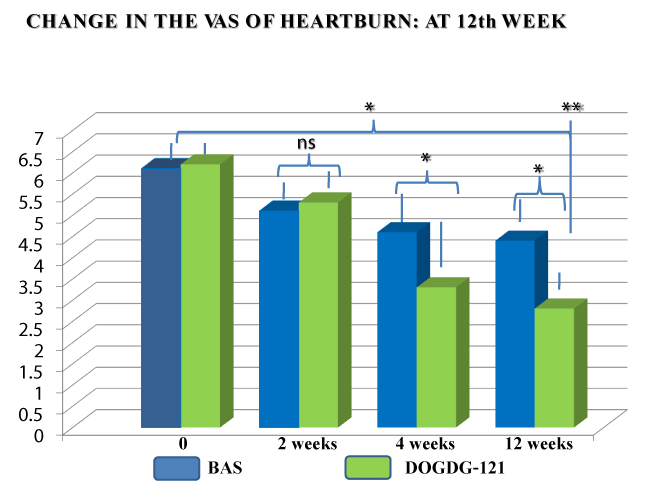
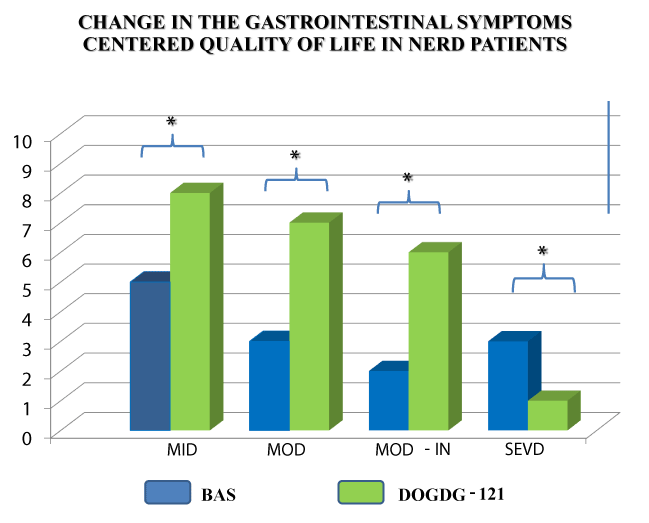
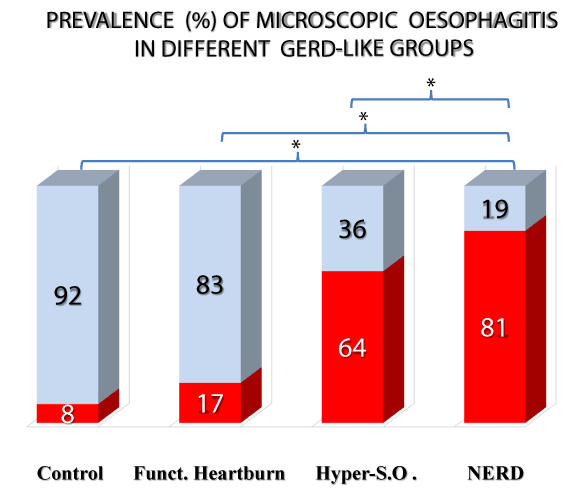
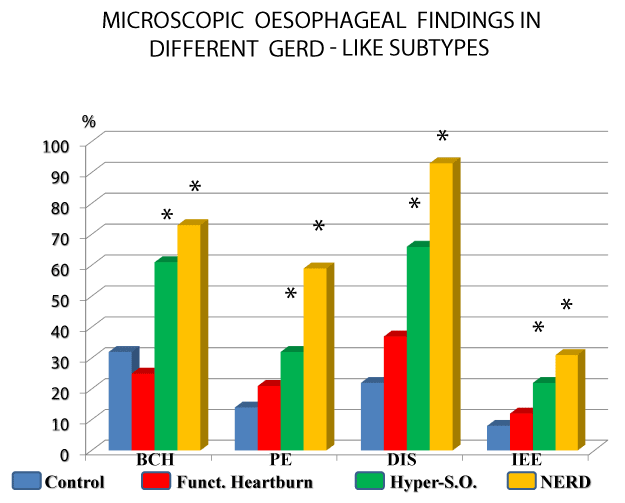
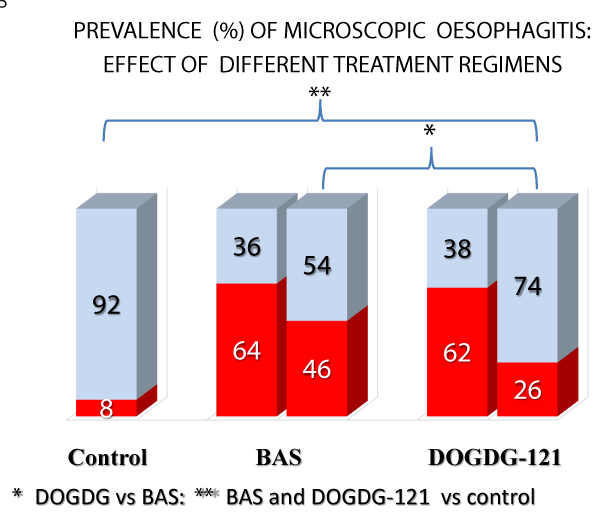
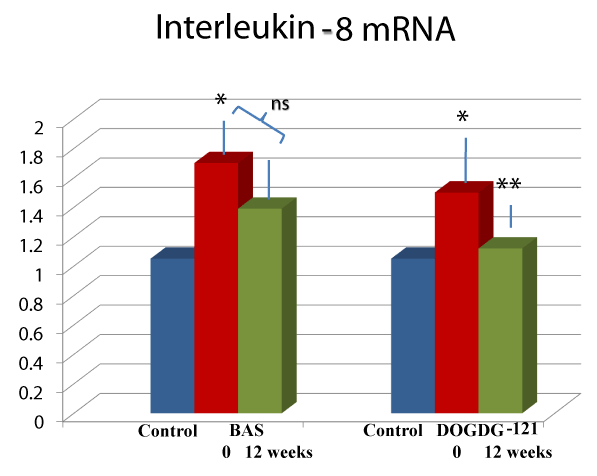
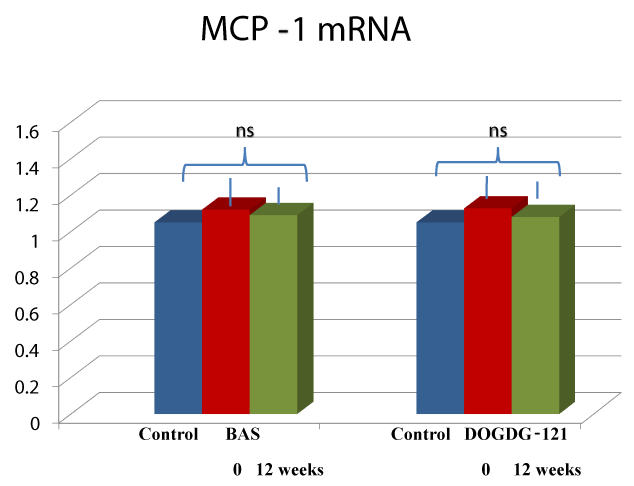
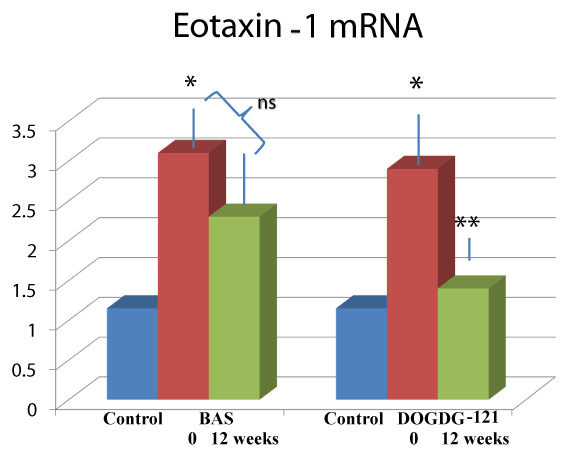
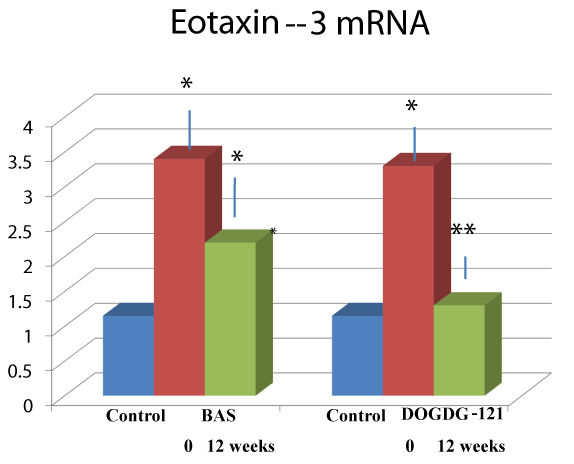

 Save to Mendeley
Save to Mendeley
